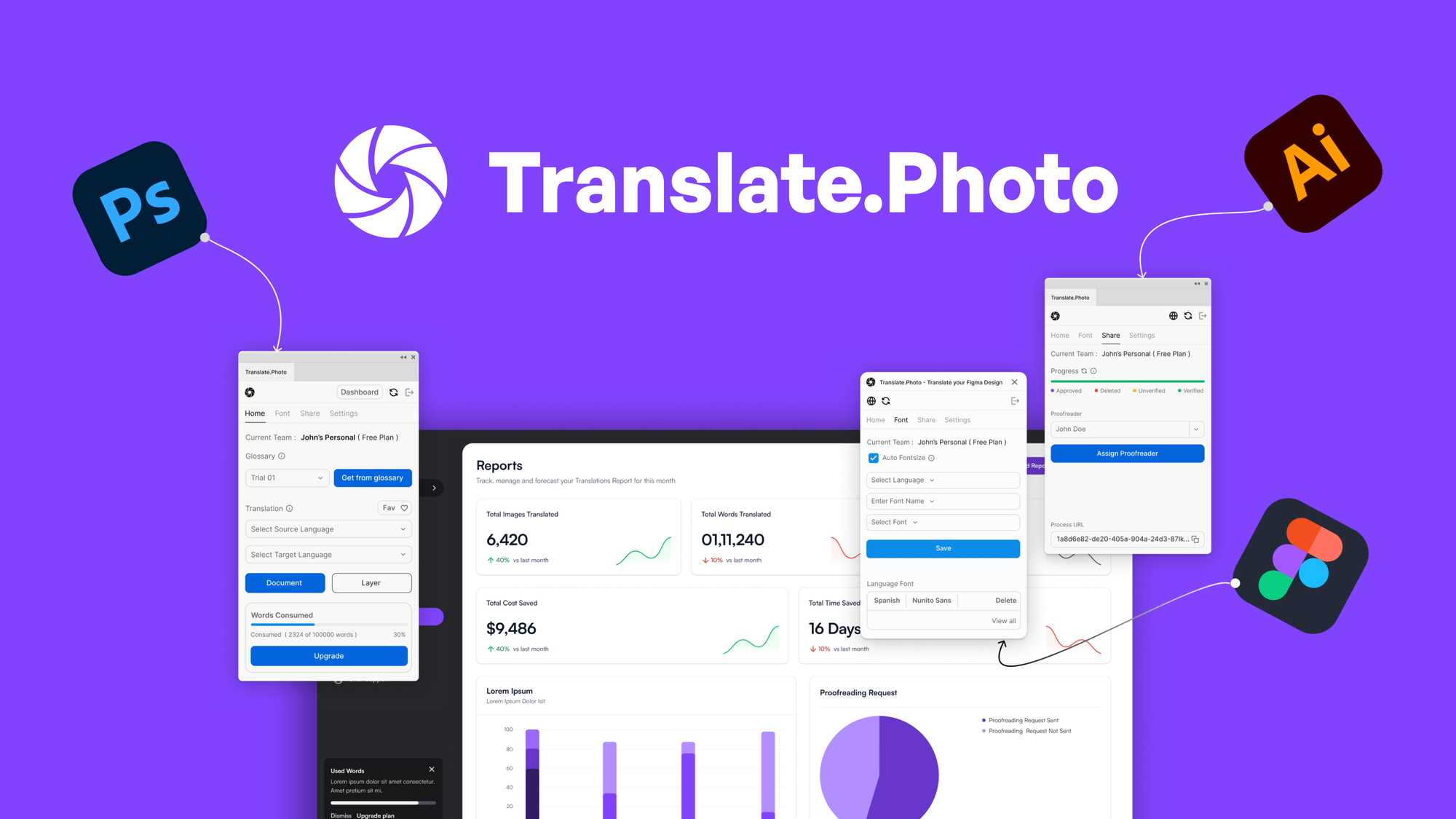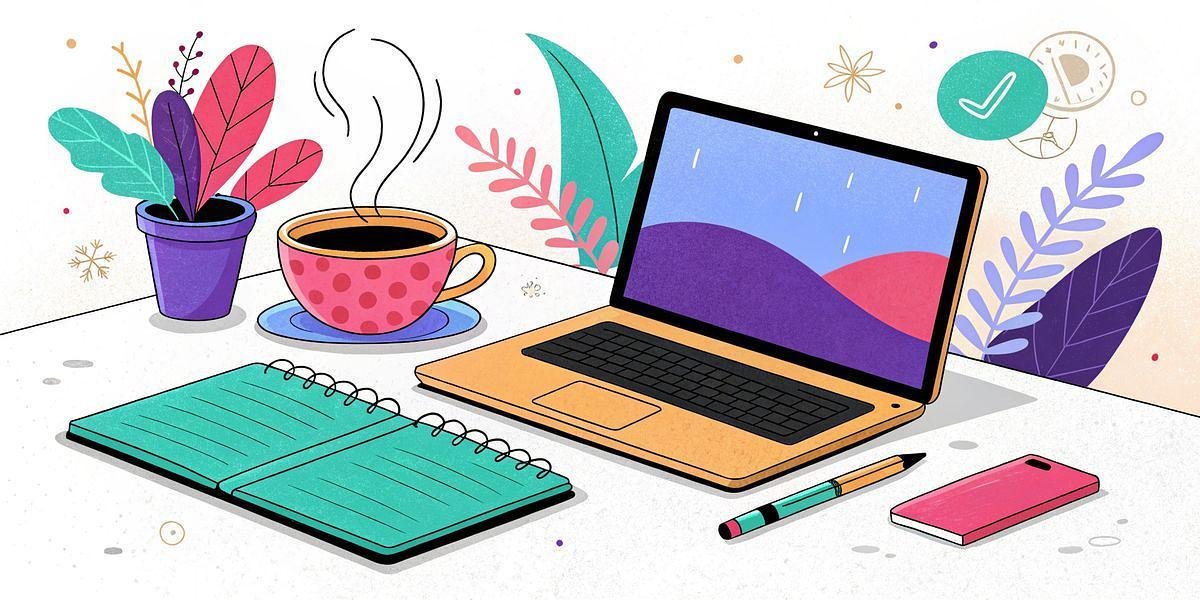As a long-time enthusiast of graphic design and marketing, I often find myself grappling with the daunting challenge of translating my creative work for diverse audiences. Just the other day, I stumbled upon a platform called Translate.photo, and my first thought was, ‘Could this be the game-changer for localization?’ With its promise to streamline image translation in over 75 languages, I couldn’t wait to dive in and explore its features.
Table of Contents
ToggleUnderstanding the Need for Localization in Design
In today’s global market, the demand for localized content is skyrocketing. Businesses are no longer just competing locally; they’re reaching out to audiences worldwide. This shift means that designers must adapt their work to resonate with diverse cultures and languages. But how do we effectively tackle this challenge?
The Rising Demand for Localized Content
Imagine launching a product in a foreign market without considering local customs or language nuances. Sounds risky, right? That’s why localization is crucial. It’s not just about translating words; it’s about making sure your message connects with your audience. As Satvik Jagannath wisely put it,
“Localization is not just about language; it’s about connecting with your audience culturally.”
With over 61,000 customers and a monthly recurring revenue of $47,500, it’s clear that businesses recognize the importance of localization. They understand that effective marketing hinges on cultural relevance. But what challenges do designers face in this process?
Challenges of Traditional Translation Methods
Traditional translation methods can be a nightmare for designers. They often involve:
- Manual translation processes that are time-consuming and prone to errors.
- Multiple rounds of proofing and approvals, which can lead to delays.
- Inconsistent messaging across different languages, risking brand integrity.
As a designer, I’ve experienced the frustration of juggling countless versions of artwork. Each version requires careful attention to detail. One small mistake can lead to missed opportunities or increased costs. It’s exhausting! And let’s be honest, who has the time for that?
Time-Saving Benefits of AI-Integrated Solutions
This is where AI-integrated solutions come into play. They can revolutionize the way we approach localization. For example, I recently discovered Translate.photo, an AI-powered image translation service that adapts creative assets for global audiences in over 75 languages. This platform offers a seamless experience, allowing designers to perform translations directly within popular design applications like Adobe Illustrator and Figma.
Here are some key benefits of using AI for localization:
- Speed: AI can perform translations in seconds, drastically reducing turnaround times.
- Consistency: It ensures that your messaging remains consistent across all languages.
- Real-time transcreation: This process adapts messaging while retaining original design elements, making it culturally relevant.
Imagine being able to make rapid changes to your designs without the back-and-forth of traditional methods. That’s the power of AI! It’s like having a personal assistant who understands the nuances of language and design.
Why Localization Matters
Localization is key to effective marketing and design. It allows businesses to connect with their audience on a deeper level. However, many companies struggle with efficient translation processes due to the manual work involved. This is where platforms like Translate.photo shine. They not only streamline the translation process but also enhance the overall quality of the content.
With features like a global proofreading network, businesses can ensure that their translations are accurate and professional. This is particularly beneficial for small teams or solopreneurs who may not have the resources for extensive editing. By combining AI proofreading with expert insights, the platform guarantees error-free content across multiple languages.
As I explored Translate.photo, I was impressed by its competitive pricing structure. With various license tiers available, businesses can choose a plan that suits their needs. Plus, the 60-day money-back guarantee allows users to try out the platform without any risk.
In conclusion, the need for localization in design is more pressing than ever. With the right tools, designers can navigate the complexities of translation and create content that truly resonates with global audiences. I believe that embracing AI solutions like Translate.photo will not only save time but also elevate the quality of our work. Are you ready to take your designs to the next level?
How Translate.photo Simplifies the Translation Process
I recently stumbled upon a fascinating platform called Translate.photo. It’s an AI-powered image translation service that adapts creative assets for global audiences. Imagine being able to translate your designs into over 75 languages without losing their original flair! As someone deeply involved in design and marketing, I found this to be a game-changer.
Integration with Popular Design Applications
One of the standout features of Translate.photo is its seamless integration with popular design applications like Adobe Illustrator and Figma. This is a big deal for designers. Why? Because the traditional translation process often involves a tedious back-and-forth. You create a design, send it for translation, and then wait for feedback. This can lead to layout issues and inconsistencies. With Translate.photo, you can perform translations directly within your design tools. This means less hassle and more time to focus on creativity.
Real-Time Transcreation for Cultural Relevance
Have you ever noticed how some phrases just don’t translate well? That’s where real-time transcreation comes in. Translate.photo doesn’t just translate words; it adapts the messaging to fit cultural contexts. This ensures that your designs resonate with local audiences. It’s not just about words; it’s about maintaining the essence of your creative work. As someone who values creativity, I appreciate this approach.
As the saying goes,
“The real magic of Translate.photo is its ability to maintain the essence of creativity while translating it for different audiences.” – Unknown
AI Suggestions and a Glossary for Maintaining Original Intent
Another impressive feature is the AI suggestions and glossary. When translating, it’s crucial to keep the original intent intact. Translate.photo allows users to save specific translations for key terms, slogans, and idioms. This is especially helpful for brands that need consistency across different languages. Imagine having a glossary that ensures your brand voice stays the same, no matter where it’s being read. That’s invaluable!
Seamless Workflow is Critical for Designers
In the fast-paced world of design, a seamless workflow is essential. The last thing you want is to be bogged down by translation issues. Translate.photo aims to eliminate the headaches associated with traditional localization. By integrating directly into design tools, it streamlines the entire process. This means fewer errors and a more efficient workflow. Designers can focus on what they do best: creating stunning visuals.
The Importance of Cultural Relevance in Translations
Let’s talk about cultural relevance. It’s not just a buzzword; it’s a necessity. When translating content, understanding the cultural nuances is crucial. A phrase that works in one language might fall flat in another. Translate.photo’s real-time transcreation ensures that your message is not only translated but also culturally appropriate. This is a significant advantage for businesses looking to expand their reach globally.
Proofreading and Accuracy
Another noteworthy aspect is the proofreading capabilities of Translate.photo. Users have access to a global proofreading network, ensuring translation accuracy across multiple languages. This is particularly beneficial for solopreneurs and small teams that may not have the resources for extensive editing. By combining AI proofreading with expert oversight, Translate.photo guarantees that your content remains error-free. This enhances the professional presentation of your designs.
Competitive Pricing Structure
Now, let’s talk about pricing. Translate.photo offers a competitive structure with four license tiers. Ranging from Tier 1 at $59 to Tier 4 at $699, each tier provides varying monthly word usage limits for translation, proofreading, and AI suggestions. This flexibility makes it suitable for different business needs. Plus, the 60-day money-back guarantee allows you to explore the platform without any risk.
In my exploration, I learned that Translate.photo was founded by Satvik Jagannath in June 2020. Based in Bengaluru, India, it’s a spinoff from a successful project called Translate.video. The frustrations observed during that project led to the creation of Translate.photo, aimed specifically at resolving slow and tedious design localization processes.
With over 61,320 customers and a monthly recurring revenue of $47,500, Translate.photo is making waves in the industry. Their roadmap includes enhancing translation accuracy, expanding language support, and improving design integrations. All of this is grounded in ongoing user feedback.
In summary, Translate.photo appears to be a significant innovation for marketers and designers. The platform’s seamless integration with established design tools, along with its robust features, positions it as a vital asset for anyone looking to expand their reach across linguistic barriers. If you’re in need of an effortless translation solution, I highly recommend exploring Translate.photo further.
Pricing and Accessibility: Is It Worth It?
When it comes to choosing a translation tool, pricing is often a major factor. I recently explored the pricing structure of Translate.photo, and I found it quite fascinating. They offer a four-tier pricing model that ranges from $59 to $699. This variety allows businesses of all sizes to find a plan that fits their needs and budget.
Understanding the Four-Tier Pricing Structure
Let’s break down the tiers:
- Tier 1: $59 (originally $228)
- Tier 2: $199 (originally $684)
- Tier 3: $399 (originally $1,524)
- Tier 4: $699 (originally $4,776)
Each tier offers different monthly word usage limits for translation, proofreading, and AI suggestions. This flexibility is crucial for small businesses and solopreneurs who may not have the resources for extensive translation needs. The affordability of Translate.photo opens doors for many who might otherwise struggle to access high-quality localization tools.
Risk-Free Exploration with a Money-Back Guarantee
Another appealing aspect of Translate.photo is their 60-day money-back guarantee. This feature allows users to explore the platform without the fear of making a poor investment. It’s comforting to know that if it doesn’t meet your expectations, you can get your money back. This kind of assurance is rare in the tech world and speaks volumes about the confidence the company has in its product.
Comparing Translate.photo’s Pricing to Competitors
In my research, I found that Translate.photo’s pricing is quite competitive compared to other translation tools on the market. Many alternatives charge significantly more for similar features. This competitive pricing model makes it easier for businesses of all sizes to adopt advanced translation capabilities. Why pay more when you can get effective tools at a fraction of the cost?
As I reflected on the potential return on investment (ROI) from using an effective localization tool, I realized that the savings from using Translate.photo could be substantial. It’s not just about the initial cost; it’s about the value it brings to your business in the long run. After all,
“Investing in effective translation tools is investing in your business’s global future.” – Unknown
Final Thoughts
In conclusion, the pricing and accessibility of Translate.photo make it a standout choice for anyone looking to enhance their translation processes. The tiered pricing structure caters to various needs, while the 60-day money-back guarantee offers a safety net for those hesitant to commit. The competitive pricing compared to other tools further solidifies its position as a valuable asset for marketers and designers alike.
As I continue to explore the features and capabilities of Translate.photo, I’m excited about the potential it holds for transforming how we approach global campaigns. If you’re in need of an effortless translation solution, I highly recommend checking out Translate.photo. It just might change the way you think about localization.
TL;DR: Translate.photo revolutionizes image translation for designers by integrating seamless localization tools within design applications, making it a must-have for anyone looking to expand their reach efficiently.






